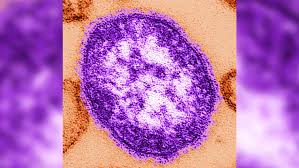World Alzheimer’s Day
Dr. M. Jayasree Consultant Neurologist KIMS Hospitals, Sec-bad. World Alzheimer’s Day takes place during World Alzheimer’s Month and is on 21 September every year. As per World Alzheimer Report 2019, many people still wrongly believe that dementia

Dr. M. Jayasree
Consultant Neurologist
KIMS Hospitals, Sec-bad.
World Alzheimer’s Day takes place during World Alzheimer’s Month and is on 21 September every year. As per World Alzheimer Report 2019, many people still wrongly believe that dementia is a part of normal ageing. This alone highlights how important public awareness campaigns, like World Alzheimer’s Month, are for changing perceptions and increasing existing public knowledge around Alzheimer’s disease and dementia. With the number of people living with dementia set to almost triple by 2050, it is more important to recognise the Risk Factors associated with dementia and take proactive steps towards risk reduction. This year’s theme ‘Never too early, never too late’, centres on the key risk factors and risk reduction, aiming to emphasise their crucial role in delaying and potentially preventing the onset of dementia. This also importantly includes ongoing risk reduction for those who have already been diagnosed
Alzheimer’s disease (AD) is a neurodegenerative disorder of uncertain cause that primarily affects older adults and is the most common cause of dementia. The most common and earliest clinical manifestation of Alzheimer’s diseaseisselective memory loss. In early stages, memory impairment may be mild. Memory for recent events is prominently impaired in early Alzheimers. Memory deficits develop insidiously and progress slowly over time.
Family members and coworkers may notice the patient getting less organized or less motivated; multitasking is often compromised. As the disease progresses, an inability to complete tasks typically emerges. It is common for patients to underestimate their deficits and offer explanations for them when they are pointed out. Interviewing an informant who has known the patient over time (usually a family member) is necessary; often it is the family member, not the patient, who brings the complaint of cognitive impairment to medical attention. Such loss of insight may be associated with behavioral disturbances. Neuropsychiatric symptoms are common in Alzheimer’s disease, particularly in the middle and late course of disease. These can begin with relatively subtle symptoms like apathy, social disengagement, and irritability.More problematic in patient management is the emergence of behavioral disturbances, including agitation, aggression, wandering, and psychosis (hallucinations, delusions, misidentification syndromes). A concomitant medical illness, medication toxicity, and other causes of delirium should be considered whenever new behavioral disturbances arise, especially if acute or subacute.
Risk factors
A variety of polygenic or acquired factors influence risk for dementia and perhaps specifically the risk for AD, including hypertension, dyslipidemia, cerebrovascular disease, altered glucose metabolism, and brain trauma. Many of these risk factors appear to be most relevant when they are present in midlife. Aggressive management of vascular risk factors during midlife represents a key strategy for reducing risk, progression, and severity of AD and other forms of dementia. Environmental risk factors include second hand smoke exposure, air pollution and exposure to pesticides. Lifestyle and activity — Physically active individuals have lower incidence and prevalence of cognitive decline and dementia, including AD.
The Alzheimer’s Association and the World Dementia Council reviewed the evidence for modifiable risk factors for cognitive decline and dementia and concluded that sufficient evidence supports the link between regular physical activity and management of cardiovascular risk factors (diabetes, obesity, smoking, and hypertension) and reduced risk of cognitive decline and possibly dementia. They also found strong evidence to conclude that a healthy diet and lifelong learning (cognitive training) may also reduce the risk of cognitive decline.
Evaluation
Neuroimaging — Brain imaging, preferably with magnetic resonance imaging (MRI), is indicated in the evaluation of patients with suspected AD [99]. Brain MRI can document potential alternative or additional diagnoses including cerebrovascular disease, other structural diseases (chronic subdural hematoma, cerebral neoplasm, normal pressure hydrocephalus), and regional brain atrophy suggesting frontotemporal dementia (FTD) or other types of neurodegenerative disease.
MRI – Structural MRI findings in AD include both generalized and focal atrophy, as well as white matter lesions. In general, these findings are nonspecific.
The most characteristic focal finding in AD is reduced hippocampal volume or medial temporal lobe atrophy.
FDG-PET and SPECT – Functional brain imaging with 18-F fluorodeoxyglucose positron emission tomography (FDG-PET) or single-photon emission computed tomography (SPECT) reveals distinct regions of hypometabolism (PET) and hypoperfusion (SPECT) in AD.
Amyloid PET imaging – Amyloid PET tracers measure amyloid lesion burden in the brain; these aid in the diagnosis of AD, differentiating AD from other causes of dementia.
Genetic testing — Genetic testing is not recommended in the routine evaluation of patients with AD. APOE genotyping adds marginally to the predictive value of clinical criteria for AD and may stratify risk of progression of amnesic MCI to AD, but both false positives and negatives occur.
Treatment
Mild to moderate dementia — For patients with newly diagnosed mild to moderate AD dementia, we suggest a trial of a cholinesterase inhibitor. The average benefit of cholinesterase inhibitors in patients with mild to moderate dementia (eg, MMSE 10 to 26; MoCA 4 to 16; CDR 1 or 2) is a small improvement in cognition, neuropsychiatric symptoms, and activities of daily living (ADLs).
Moderate to severe Alzheimer disease — We suggest the use of memantine in combination with a cholinesterase inhibitor in patients with advanced AD.
The combination of memantine and a cholinesterase inhibitor leads to modest improvements in cognition and global outcomes in patients with advanced disease.
Aducanumab is a recombinant monoclonal antibody directed against amyloid beta. The US Food and Drug Administration (FDA) has approved aducanumab for the treatment of mild AD.
Vascular risk factor management:
Identification and treatment of risk factors for stroke, cardiovascular disease, and dementia may represent an important strategy for slowing the progression of cognitive decline.
Non pharmacologic and supportive care
Nutrition — Weight changes in either direction can occur in patients with dementia, particularly in more advanced stages. For both subsets of patients, consultation with a dietician may help in optimizing the patient’s nutritional intake.
Inadequate nutrition is associated with increased morbidity and mortality . Initial steps to increase nutritional intake can include environmental modifications such as providing a relaxed, home-style setting and having the patient eat with other family members (or residents in long-term care facilities) rather than by themselves.
Subsequent interventions such as assisted feeding and oral nutritional supplements may improve weight and fat-free mass.
Geriatric care managers — Geriatric care managers, usually specially trained nurses or social workers, provide a key service in a geriatric referral practice. They offer guidance to patients and families regarding how to anticipate the need for in-home or nursing home care and are knowledgeable about community resources, health benefits, and caregiver support services. They can also help families connect with legal resources to assist in financial and other decisions, such as appointing power of attorney, developing a financial plan, and managing advanced directives.
Exercise programs — We encourage our patients with dementia to participate in regular exercise programs. A regular walk with a family member or caregiver, preferably three or more times per week, or an exercise program at a senior center can be beneficial to patients.
Cognitive rehabilitation — Cognitive rehabilitation aims to help patients in the early stages of dementia to maintain memory and higher cognitive function and to devise strategies to compensate for declining function.
Alcohol use — Alcohol can exacerbate cognitive dysfunction and behavioral disturbance in patients with dementia. Patients with dementia, particularly those with mild AD, can sometimes drink to excess because they lose track of how many drinks have been consumed.
We typically advise patients and caregivers to limit alcohol consumption to low amounts (eg, one drink per sitting) and avoid after-dinner alcohol completely because of its detrimental effects on sleep.
Advance care planning — Advance care planning is critical to the management of patients with advanced dementia and should occur throughout the disease process
Support for caregivers
Caregivers of patients with dementia can suffer significant stress, particularly as cognitive function declines or behavioral symptoms worsen [35]. Counseling and participation in support groups can be beneficial. It is also helpful to encourage the caregiver to get help in sharing the caregiving burden with other family members or, if affordable, paid caregivers. Respite care and elder daycare may also be of benefit in providing a period of relief for caregivers [36] so that they can come back refreshed and rested.






